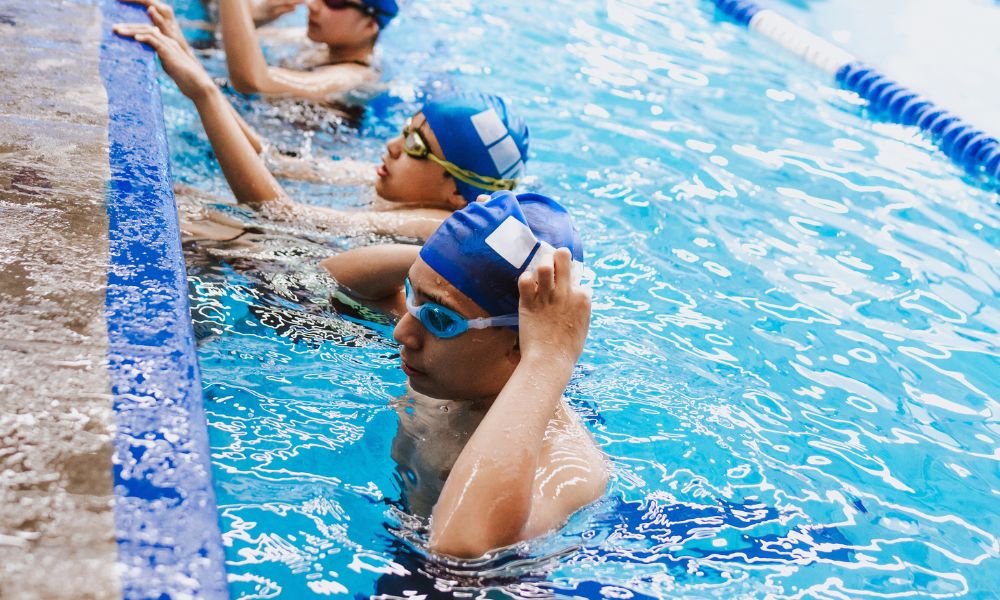Cold water swimming, also known as wild swimming, has been gaining popularity in recent years, especially among those looking for a refreshing, invigorating experience. Whether you’re braving icy lakes, coastal waters, or local rivers, cold water swimming offers a range of physical and mental health benefits, from boosting circulation to enhancing mood. However, as winter approaches, it’s essential to equip yourself with the right accessories to stay safe, warm, and comfortable.
Here are nine cold water swimming accessories to consider for winter 2024, whether you’re a seasoned pro or a newcomer to the cold-water plunge. If you’re also into paddleboarding or other winter water sports, these items will enhance your cold-water adventures.
1. Thermal Wetsuit
A thermal wetsuit is an essential piece of gear for anyone planning to swim in cold water during the winter months. Made from thicker neoprene, thermal wetsuits provide insulation to keep your body temperature regulated in frigid water. Look for wetsuits with added thermal linings or smooth skin panels, which can significantly increase warmth. Additionally, wetsuits offer buoyancy, which can be helpful for both swimming and paddleboarding, allowing you to conserve energy while staying afloat in cold conditions.
When choosing a wetsuit, it’s important to ensure a snug fit without restricting movement. Try on different options to pick the right one for you and your level of activity.
2. Neoprene Gloves
Your hands are among the first body parts to feel the chill when you’re submerged in cold water, making neoprene gloves a must-have for winter swimming. These gloves are designed to keep your hands warm while allowing enough dexterity to swim comfortably. Look for gloves with a thickness of at least 3mm, as they offer a good balance between warmth and flexibility.
Neoprene gloves are also useful if you’re paddleboarding in cold conditions. The extra grip can help maintain control of your paddle, even when the temperatures drop.
3. Swim Boots or Socks
Just like your hands, your feet are extremely vulnerable to cold water. Swim boots or neoprene socks are designed to keep your feet warm while providing extra grip on slippery surfaces like rocks or wet sand. Swim boots, which are thicker, offer more protection and are ideal for extremely cold water or long sessions in the water. On the other hand, neoprene socks are lighter and provide a bit more flexibility for shorter swims or when paired with a wetsuit.
These accessories are also useful for winter paddleboarding, where maintaining warmth and grip is crucial for stability.
4. Swim Cap (or Two)
A significant amount of body heat is lost through the head, so a swim cap is a small but critical accessory for cold water swimmers. Opt for a silicone or neoprene swim cap, as these materials are thicker and provide more insulation than regular latex caps. Some swimmers even wear two caps—one silicone and one latex—to maximize heat retention.
For those particularly sensitive to cold, neoprene hoods that cover both the head and neck are a great option, especially for longer swims in colder water. They also provide additional protection against windchill on your way to and from the water.
5. Dry Robe or Changing Robe
After a cold water swim, your body continues to lose heat quickly, so it’s important to warm up as soon as you exit the water. A dry robe or changing robe is an excellent solution for staying warm post-swim. These robes are made with a waterproof outer shell and a cozy fleece lining on the inside, helping you dry off and warm up quickly.
Changing robes are also designed for easy changing outdoors, allowing you to get out of your wet swim gear without a fuss. Whether you’re swimming or paddleboarding, these robes provide warmth and convenience when braving the cold. When looking for a dry robe, be sure to pick the right one for you based on the length and location of your swims.
6. Waterproof Swim Bag
If you’re swimming in the winter months, keeping your gear dry and organized is essential. A waterproof swim bag ensures that your clothes, towels, and other items stay dry, even in damp conditions. These bags often have roll-top closures, keeping out water whether you’re at the beach, by a lake, or on your paddleboard.
Some swim bags even come with separate compartments for wet items, allowing you to store your soaked wetsuit or swimsuit away from the rest of your gear. For winter adventurers, a waterproof swim bag is indispensable.
7. Insulated Flask
Staying hydrated and warm before and after a cold water swim is crucial. An insulated flask is perfect for bringing a hot beverage to enjoy after your swim. Whether it’s tea, coffee, or a hot broth, having a warm drink on hand can help your body recover from the cold and prevent the post-swim chill from setting in.
An insulated flask is also a great companion for winter paddleboarding trips, providing a quick warm-up when you’re out on the water for extended periods.
8. Waterproof Phone Case
Safety is paramount when swimming in cold water, particularly in winter. A waterproof phone case allows you to keep your phone protected and accessible while swimming or paddleboarding. These cases are designed to be fully submersible, ensuring that your phone stays dry while allowing you to make calls or use GPS if needed.
Carrying a phone is an important safety measure for anyone venturing into cold waters, especially when swimming in more remote locations or during solo swims.
9. Swim Buoy
A swim buoy serves multiple purposes during cold water swimming. Not only does it provide extra visibility to others, such as boats or lifeguards, but it also acts as a floatation device for rest breaks. If you’re swimming in open water during winter, a buoy can offer peace of mind, allowing you to rest without leaving the water completely.
Swim buoys come in various sizes, and some even have waterproof compartments for storing valuables like keys or your phone.
Cold water swimming can be an invigorating experience, but it requires the right gear to ensure safety, warmth, and comfort. From thermal wetsuits and neoprene gloves to waterproof phone cases and swim buoys, having the right accessories makes a big difference in how you experience the cold water. Whether you’re swimming or paddleboarding, these essentials can help you enjoy the benefits of cold water activities while staying safe and warm throughout winter 2024.
When investing in cold water swimming gear, take the time to pick the right one for you based on your specific needs and preferences, ensuring that you can embrace the chill and make the most of your winter adventures.



